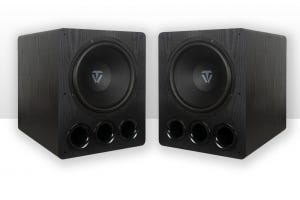-
Read more
As television screens get bigger and bigger, we sometimes run out of room to put them. Mounting your big screen on the wall is a great way to reclaim valuable space, to keep it safe from sticky fingers as well as mounting it in a better viewing position. Despite being pretty simple to install, there are some common mistakes that some people do which can result in a less than perfect installation.
-
Read more
At the back of our devices are often many inputs of varying shapes and sizes. You may know what they all are or you may not. You may even think they all have to be filled to make your device work. Not so! The variety of input options is to give you choice. Because everyone has different pieces of equipment of varying age and ability that need to be connected to even more pieces of equipment, there is not one solution or input that is universal.
-
Read more
The switcher (also known as a switch) is the opposite. This will allow multiple source devices to be sent to a single receiving device. Say BluRay Player, Set Top Box and PS3 via HDMI to a TV with only 1 HDMI input. Getting a switcher with a remote control is even more convenient. Switch to whichever device you like with the click of a button. You simply switch to
-
Read more
You wouldn’t believe how many people have speakers that are “out of phase”. Essentially this means that your wiring is not quite right, and you will not be hearing the sound waves correctly. You may even be hearing the left from the right and vice versa. Having out of phase speakers won’t hurt your equipment, but you won’t get the most out of your speakers if you don’t correct it either.
-
Read more
Do you know what the aspect ratio of your TV or Projector Screen is? If you do, then chances are you are pretty up to date with the variety of options available. If you don’t, then we’d like to bring you up to speed on what aspect ratio is as well as the history behind it. Aspect Ratio is simply a numerical way to describe the width to height ratio of a rectangular image.
-
Read more
Watching old “classic” movies is one of my favourite pastimes on a rainy day, but have you ever wondered why the picture is so grainy? Well, it comes down to the picture resolution. Just like computer monitors or digital photos, the resolution of the image is so important in terms of picture quality.
-
Read more
If you’re considering a projector screen for your home theatre, there are a few things to consider. Bigger is always better right? Not necessarily. Included in the regular questions we hear from our customers is “How big should the screen be?” or “How big are your screens?” in the hope they are so big they will eclipse the entire wall. This is where a “bit” of restraint is needed, because a quick decision to slap up a huge screen in a small room will lead to real disappointment in the long run.
-
Read more
Audio Return Channel, often referred to as ARC, is a very practical feature that has become popular since the evolution of the HDMI v1.4 (also known as high speed cable with Ethernet). Essentially ARC allows the audio signal to be transferred from your television back up to your receiver at the same time a signal is being sent from your receiver to your television. This means a separate audio cable is not necessary from your television to your receiver. Typically a digital optical or digital coaxial would be used to transfer the audio signal from your tv to the receiver.
-
Read more

You’ve probably heard the term “VESA” before in regard to televisions, but perhaps its meaning has got you stumped! Introduced in 1997, the VESA mount interface, is a standard defined by the international standards body “Video Electronics Standards Association” for mounting flat panel monitors, TVs, and other displays, stands or wall mounts. It is common on most modern flat-panel monitors and TVs. The standard specifies wall mount screw hole spacing, screw hole depth and screw thread size. -
Read more
Contrast Ratio is an important figure to take into account when looking for your new projector. Along with the ANSI Lumens, the contrast of the picture is one of the more noticeable specifications.The ratio explains the level of intensity between the whitest white and the blackest black of the image. The figure represents some light output for white divided by some light output for black.















